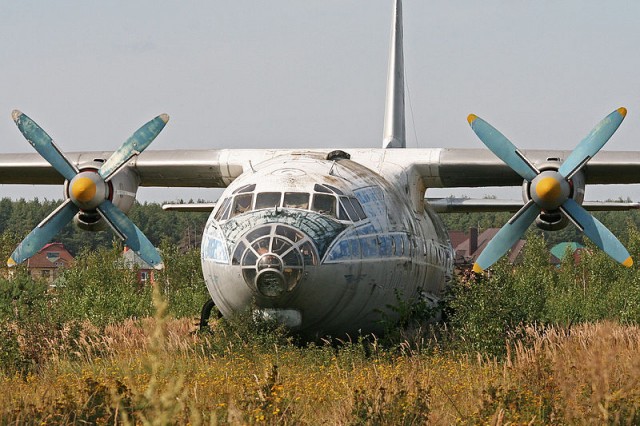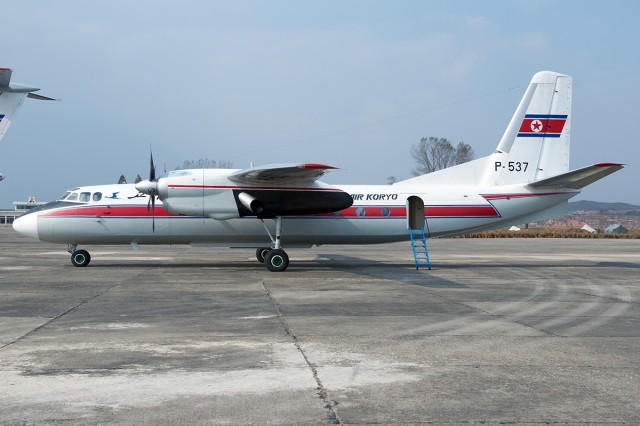
An AN-10 at the Monino Aviation Museum – Photo: Alan Wilson
When most people think about Soviet, four-engine, turbine passenger aircraft, they tend to think about the “classics”; the IL-18 and the Tu-114. There are reasons, of course, why the Antonov AN-10 doesn’t immediately jump to mind – but that ignores the significant contributions it made to domestic travel within the Soviet Union.
The Tupolev Tu-104 was a great aircraft, and when prestige mattered more than unit cost, it was a perfect way of showing Soviet aeronautical achievement abroad. Russian flag carrier Aeroflot, however, was directed to offer cost-effective transport to all points within the Soviet Union and satellite states. There was another issue; the Tu-104, while durable by early jet standards, was still difficult to maintain after frequent operations on “less prepared” airfields.

Air Koryo AN-24B (P-537) parked at Sondok
Antonov’s AN-24 is probably the easiest of the classic Russian aircraft to hitch a ride on. With at least 800 still in service in eastern Europe, central Asia, Cuba, and Africa, usually all it takes to fly one is a creative routing. Of course, none of those AN-24 are operated by Air Koryo, the national airline of North Korea.
The AN-24 is a stereotypical high-winged turboprop. More akin to the classic Dash-8s, rather than the newer Q400s. It was built to take off from nearly anywhere and land on the most ’œunprepared’ airfields Soviet surveyors and engineers could throw at it. P-537, the AN-24B I flew on, landed in Sondok shortly after my arrival flight via an Air Koryo IL-76.
We were not allowed to photograph the interior until after lunch in Hamhung, but were permitted to walk around the airframe and take plenty of photographs. After lunch, I fought my way to the front of the line to ensure that I would have the opportunity to take an unobstructed cabin shot. My patience and persistence paid off.

